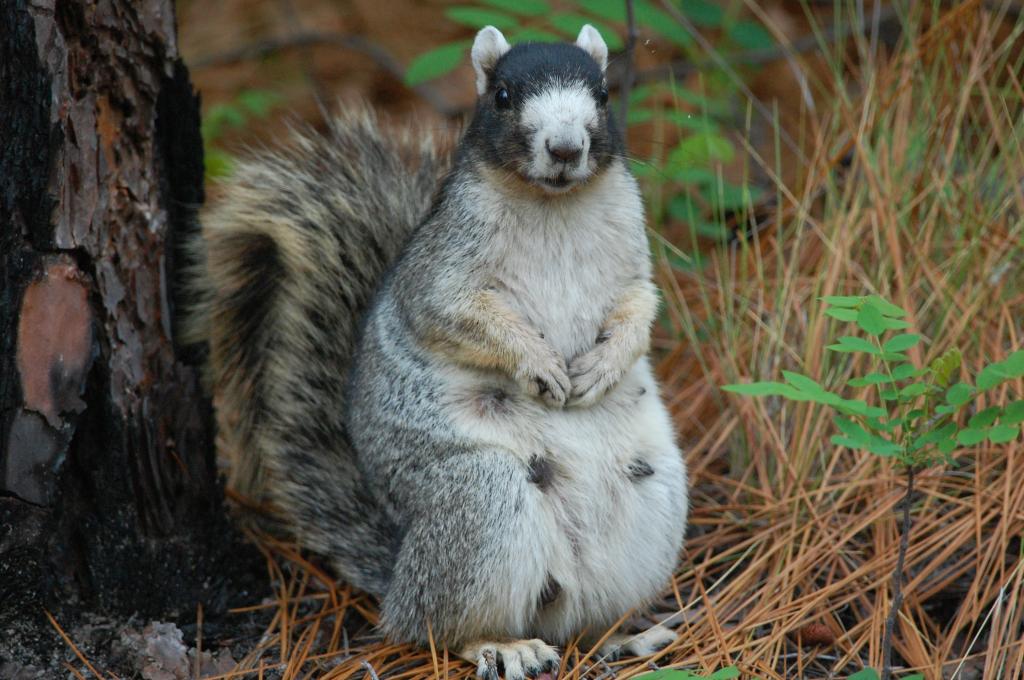 |
 |
|
Eastern Fox Squirrel - Sciurus niger Sciuridae Members: | Search Common: Search Scientific: |
|
|
||||||
 Photo by: Scott Hartley |
| Distribution |
In NC, has very "checkered" range -- not at all obvious from the range map. It occurs mainly in the southern half of the Coastal Plain (especially in the Sandhills region), but sporadically in the northern Coastal Plain, west of Albemarle Sound; absent (thus far) north of Albemarle Sound and only recently recorded from the western half of the "Pamlimarle Peninsula". Also present in the northwestern mountains and adjacent northwestern Piedmont, and formerly in the southwestern mountains, where poorly known at the present time. In the Piedmont, there are scattered records, mainly in the southern and central counties, being generally absent in the northern third to half of the province (except in the foothills). Ranges over nearly all of the eastern United States, barely into Canada, but absent in New England; occurs south to the Gulf Coast. | |
| Abundance | Generally fairly common in the Sandhills region, but uncommon and local eastward in the Longleaf Pine belt to about Wilmington (and southward, where it can be locally numerous). Oddly scarce northeast of Wilmington, even in Longleaf Pine habitats, northeast to Croatan National Forest. Declining over most of this part of the range. However, somewhat increasing in the northern half of the Coastal Plain, perhaps moving south from VA. Rare but possibly increasing in the Piedmont part of the range, though absent from many northern counties. Rare to uncommon, but increasing, in the northwestern part of the state, spreading south from VA and/or TN. Formerly rare but regular in the southwestern mountains, but very few recent records. The species remains on the N.C. Natural Heritage Program's Watch List, at least for now. | |
| Seasonal Occurrence | Active year-round. | |
| Habitat |
In the southern half of the Coastal Plain, typically in dry to mesic Longleaf Pine stands, especially where burned and thus where the hardwood understory is not dense. Farther north of the Longleaf Pine belt, and elsewhere in the state, typically in forests or woodlands with mature hardwoods, and seldom near conifers. However, as the species spends much time on the ground, it favors a rather sparce shrub or understory zone. They have adapted to golf courses and some semi-wooded residential areas, especially in the Sandhills and in the Wilmington/Brunswick County areas. See also Habitat Account for General Dry-Xeric Woodlands | |
| Behavior | Active during the day. The species is much more at home on the ground than is the Eastern Gray Squirrel, but does not normally stray too far from trees in which to escape. They are not as adept at clambering about trunks and limbs as the latter species. Nests are usually in tree cavities. | |
| Comments | Though it has long been a game animal, there have been many attempts to have the species put on the state protected list, such as State Special Concern. However, a game animal cannot be State-listed, and the N.C. Wildlife Resources Commission has not moved the Fox Squirrel off the game animal list. The various populations around the state have been assigned by various authors to several subspecies. However, there is so much confusion about subspecies that there is little unanimity from mammalogists about what is here. Fox Squirrels can be seen most easily around some golf courses. Fire management of the species is still important in the longleaf pine zone, as fire suppression leads to more oaks in the understory, and such conditions favor the Gray Squirrel over the Fox Squirrel. | |
| Origin | Native | |
| NC List | Official | |
| S3 | ||
| W | ||
| G5 | ||
| Federal Status | ||
| subspecies |
Sciurus niger niger; other subspecies may be present S. n. rufiventer is (or was) possibly present in the extreme southwestern corner of the state. | |
| other_comName | ||
| synonym | ||
| NC Map Map depicts all counties with a report (transient or resident) for the species. | Click on county for list of all database records for species in that county. |